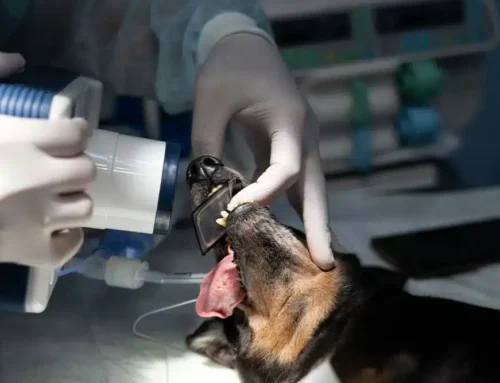Brachycephalic obstructive airway syndrome (BOAS) is a long-winded respiratory condition that affects short-snouted pets. While these smush-faced breeds are undeniably adorable, their unique facial anatomy can lead to breathing difficulties. If you share your home with a flat-faced pet, you need to understand how BOAS can affect your furry pal and what you can do to improve their breathing. Let’s dive into the ins and outs of brachycephalic obstructive airway syndrome in pets.
What is brachycephalic obstructive airway syndrome in pets?
BOAS is a complex respiratory disorder that results from the anatomical features of brachycephalic breeds who have flattened faces because their skull and jaw bones are smaller and shorter. However, the soft tissues in the skull have not become shortened to fit the skeletal structure, so they’re compressed into a small space, creating airway resistance. While people often believe that these abnormalities are OK, because they are normal for the breed, they pose lifelong challenges for these pets.
Affected pets have one or more of the following anatomical features:
- Stenotic nares — A pet with stenotic nares has narrowed nostrils that make allowing adequate airflow through the tiny openings difficult.
- Hypoplastic trachea — The trachea is essentially the tube between the nose and the lungs. A hypoplastic trachea is too small to effectively move air in and out of the lungs.
- Elongated soft palate — The soft palate is the tissue on the top and back of the throat that helps separate the airways from the throat. In brachycephalic pets, the soft palate is often too long and blocks airflow.
- Everted laryngeal saccules — Laryngeal saccules are two small pieces of tissue typically tucked in near the larynx in the back of the throat, but in pets with BOAS, the saccules flip out and obstruct airflow.
What are the signs of brachycephalic obstructive airway syndrome in pets?
BOAS signs in affected pets vary widely in severity and may not always correlate with the pet’s outward physical appearance. For example, a French bulldog may have a longer snout than others of their breed, but may struggle harder to breathe.
Common BOAS signs in pets include:
- Noisy breathing — Pets with BOAS make an extremely wide range of sounds when they breathe, including snorting, wheezing, whistling, gurgling, and snoring, and may also make snoring sounds while awake.
- Labored breathing — Pets may exhibit an increased effort to breathe and will often pant, especially during physical activity.
- Sleep apnea — Pets with BOAS can suffer from sleep apnea, where they temporarily stop breathing while sleeping and abruptly begin again, often with a loud snort that wakes them.
- Exercise intolerance — Playing, running, and jumping are difficult for pets who struggle to breathe, so your pet may not be able to keep up on walks or while playing.
- Gagging, regurgitating, or vomiting — The abnormal airway that increases resistance also creates numerous gastrointestinal (GI) issues. Pets with BOAS often have acid reflux, hiatal hernias, pyloric stenosis, and esophageal inflammation, and will vomit regularly. Once the airway issue is corrected, many of these GI signs will be resolved.
- Difficulty recovering from warm temperatures — Pets primarily cool off through panting. When abnormal brachycephalic anatomy impairs a pet’s panting ability, they overheat quickly and take much longer to cool off, making them much more susceptible to heatstroke.
Which pets are most commonly affected by BOAS?
The most popular dog breed in America is the poster child for BOAS. Sorry, Labrador retrievers, but the French bulldog has taken your spot as top dog, although they are often afflicted with severe breathing issues.
Other flat-faced, short-nosed breeds predisposed to BOAS include:
- Dogs:
- English bulldogs
- Pugs
- Shih tzus
- Boston terriers
- Pekingese
- Lhasa apsos
- Boxers
- Chinese shar-peis
- Bullmastiffs
- Cats:
- Persians
- Himalayans
- Burmese cats
How is BOAS diagnosed in pets?
In many cases, your pet can be diagnosed with BOAS through a physical exam and history of clinical signs. However, to fully assess the problem, the pet may require advanced imaging (e.g., a CT scan) under general anesthesia.
How is BOAS treated in pets?

While BOAS cannot be cured, many anatomical abnormalities can be surgically corrected with the exception of a hypoplastic trachea. Surgical procedures to widen nostrils, shorten an elongated soft palate, and remove the laryngeal saccules can help a pet breathe easier after recovery.
Respiratory difficulties in pets with BOAS can be reduced with additional therapies, such as:
- Weight management — Maintaining a healthy weight is crucial, as additional weight makes breathing harder for your pet and puts extra stress on their respiratory system. Exercise with caution, though, to avoid overheating and collapse.
- Temperature control — Brachycephalic pets are more susceptible to heat stress, so keeping them in a cool environment is critical.
- Medications — Bronchodilators or anti-inflammatory medications can help your pet breathe easier, and acid-reducing and antiemetic medications can alleviate GI problems.
If your flat-faced pet snorts, gags, or struggles to breathe or play, they likely have brachycephalic obstructive airway syndrome. Keep a close eye on your pet and contact our Peak Pet Urgent Care team if you notice breathing difficulties.







Leave A Comment